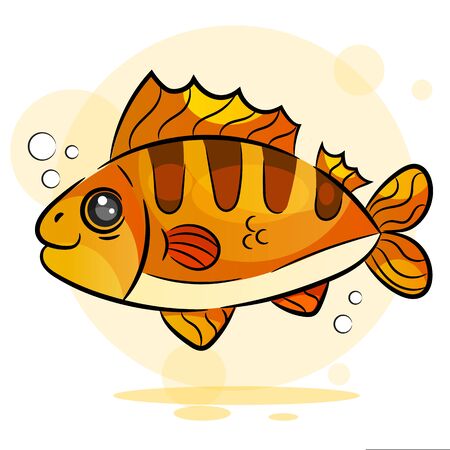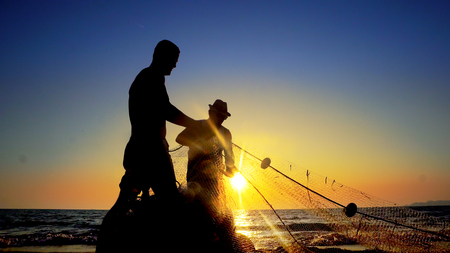Understanding Water Temperature and Its Role in Fish Behavior
When it comes to fishing, water temperature plays a huge role in how active fish are and when theyre most likely to bite. Whether youre casting in a local freshwater lake or heading out into saltwater bays, knowing how temperature affects fish behavior can make or break your day on the water.
Why Water Temperature Matters
Fish are cold-blooded animals, which means their body temperature is directly influenced by the water around them. As the water warms up or cools down, it impacts their metabolism, movement, and feeding habits. Different species respond in different ways depending on their comfort zone or “optimal temperature range.”
How Temperature Affects Fish Metabolism
Water temperature has a direct effect on a fish’s metabolism. Warmer water usually speeds up metabolic rates, making fish more active and hungrier. On the flip side, colder water slows things down, meaning they’ll be less interested in chasing your bait.
| Water Temperature | Metabolism | Fish Behavior |
|---|---|---|
| Cold (<50°F / 10°C) | Slow | Lethargic, low feeding activity |
| Mild (50–70°F / 10–21°C) | Moderate | Increased movement and feeding |
| Warm (70–85°F / 21–29°C) | High | Very active, aggressive feeders |
| Hot (>85°F / 29°C) | Too high | Stressed, may retreat to cooler areas |
Differences Between Freshwater and Saltwater Species
Freshwater and saltwater fish often have different temperature preferences. For example, largemouth bass thrive in warmer freshwater temperatures, while trout prefer cooler streams. In saltwater environments, species like redfish become more active as the water warms up, whereas others like striped bass might move to deeper, cooler areas during hot summer days.
Examples of Common Species and Their Preferred Temperatures
| Species | Environment | Preferred Temp Range (°F) |
|---|---|---|
| Largemouth Bass | Freshwater | 65–80°F |
| Rainbow Trout | Freshwater | 50–60°F |
| Redfish (Red Drum) | Saltwater | 70–85°F |
| Striped Bass | Saltwater/Freshwater | 55–68°F |
The Takeaway for Anglers
If you want to increase your chances of landing a catch, pay close attention to water temperature before you hit the water. Use a thermometer or check local reports to match your target species with the best conditions. Understanding this simple but powerful factor will help you figure out where fish are likely to be—and what kind of mood theyre in.
2. Thermal Preferences of Popular Game Fish Species
Understanding how different fish species respond to water temperature is key to improving your chances on the water. Each species has a preferred temperature range where theyre most active and feeding aggressively. When temperatures fall outside this comfort zone, their metabolism slows down, and they tend to be less responsive to bait or lures.
Preferred Temperature Ranges by Species
Below is a quick reference guide for the optimal temperature ranges for some of the most popular game fish in the U.S. These ranges are where each species tends to be most active and likely to feed.
| Fish Species | Preferred Temperature Range (°F) | Activity Notes |
|---|---|---|
| Largemouth Bass | 65–85°F | Most aggressive between 70–75°F; sluggish below 50°F or above 90°F |
| Smallmouth Bass | 60–75°F | Thrives in cooler waters than largemouth; peak activity around 65–70°F |
| Trout (Rainbow, Brown, Brook) | 50–65°F | Highly active in cool, oxygen-rich waters; stressed above 70°F |
| Walleye | 55–70°F | Bite best during spring and fall when temps are moderate; less active in summer heat |
| Channel Catfish | 70–85°F | Warm-water feeders; activity drops sharply below 60°F |
| Northern Pike | 55–70°F | Prefers cooler water; often found deeper or shaded in warmer months |
Seasonal Shifts and Fish Behavior
Water temperature changes with the seasons, and so does fish behavior. In spring, as temperatures rise into their preferred ranges, fish become more active and start feeding heavily. Summer can lead to midday slowdowns due to high surface temps, pushing fish deeper. Fall often brings another feeding frenzy as fish prepare for winter. During winter, cold water slows their metabolism significantly—expect light bites and sluggish movement.
Tips Based on Seasonal Water Temps:
- Spring: Target shallows as fish move in to spawn and feed.
- Summer: Look for deeper or shaded areas where water is cooler.
- Fall: Active feeding returns—great time for aggressive tactics.
- Winter: Downsize baits and slow your presentation.
The more you understand how water temperature affects different species throughout the year, the better you can plan your fishing trips and choose the right techniques for success.

3. Seasonal Shifts and Their Impact on Feeding Patterns
As water temperatures change with the seasons, fish behavior—including feeding habits and activity levels—also shifts. Understanding these seasonal changes can help anglers adjust their bait selection, timing, and overall fishing strategy to increase their chances of success.
Spring: Warming Waters and Increased Activity
In spring, rising water temperatures signal the end of winter dormancy. Fish become more active as they prepare for spawning, which makes them more likely to feed aggressively. However, early spring waters can still be chilly, especially in the mornings, so timing is key.
Tips for Spring Fishing:
- Bait Selection: Use slow-moving baits like jigs or soft plastics early in the season; switch to faster presentations like crankbaits as water warms.
- Feeding Windows: Late morning to afternoon when the sun has warmed the water a bit.
- Strategy: Focus on shallow areas where water heats up faster and fish move to spawn.
Summer: Warm Water and Early/Late Feeding
During summer, water temperatures peak. While fish metabolism is high, overly warm water can reduce oxygen levels, causing fish to retreat to deeper, cooler zones during mid-day heat. Feeding activity often happens during low-light periods.
Tips for Summer Fishing:
- Bait Selection: Topwater lures in early morning or evening; deep-diving crankbaits or drop shots during mid-day in deeper waters.
- Feeding Windows: Dawn and dusk are prime times for surface action.
- Strategy: Fish deeper structures during the day; target shaded or moving water where temperatures are cooler.
Fall: Cooling Temps and Aggressive Feeding
Fall brings cooling water temps that trigger a feeding frenzy as fish bulk up for winter. This is one of the best times of year for anglers because fish are actively hunting food before cold sets in.
Tips for Fall Fishing:
- Bait Selection: Match-the-hatch with baitfish imitators like swimbaits or spinnerbaits.
- Feeding Windows: All day activity increases, especially on overcast days.
- Strategy: Cover lots of water quickly to find active schools; focus on transition zones like drop-offs near flats.
Winter: Cold Water and Slowed Metabolism
Fish slow down significantly in winter due to cold water temperatures. They feed much less frequently and stay close to deeper, more stable environments. Patience and finesse are essential this time of year.
Tips for Winter Fishing:
- Bait Selection: Use small-profile lures like ice jigs or blade baits with subtle movements.
- Feeding Windows: Midday when sunlight slightly warms the water.
- Strategy: Fish deep holes and move slowly; vertical presentations work well through the ice or from a boat.
Seasonal Overview Table
| Season | Main Water Temp Trend | Bait Type | Best Time to Fish | Main Strategy |
|---|---|---|---|---|
| Spring | Warming Up | Jigs, Crankbaits | Late Morning – Afternoon | Target shallow spawning areas |
| Summer | Hot | Topwater, Deep Divers | Dawn & Dusk | Fish deep structures midday |
| Fall | Cooling Down | Baitfish Imitators | Mornings & Overcast Days | Cover ground quickly near drop-offs |
| Winter | Cold & Stable | Tiny Jigs, Blade Baits | Noon – Early Afternoon | Suspend baits vertically in deep holes |
4. Thermoclines and Their Effect on Fish Location
In many lakes and reservoirs, especially during the warmer months, the water doesn’t stay at a consistent temperature from top to bottom. Instead, it forms layers based on temperature differences. This natural layering is called a thermocline, and understanding it can help anglers locate where fish are holding and feeding.
What Is a Thermocline?
A thermocline is a distinct layer in a body of water where the temperature changes rapidly with depth. Typically, there are three main layers:
| Layer | Description |
|---|---|
| Epilimnion | The upper layer; warmest water, usually well-oxygenated and affected by wind and sunlight. |
| Thermocline | The middle layer; rapid temperature drop with depth, less light penetration. |
| Hypolimnion | The bottom layer; coldest water, often low in oxygen during summer. |
How Thermoclines Affect Fish Behavior
Fish are cold-blooded animals, meaning their body temperature is regulated by the surrounding water. They tend to seek out areas that offer the best combination of comfort, food availability, and oxygen levels. The thermocline plays a big role in this decision-making process:
- Comfortable Temperatures: Many species prefer the stable temperatures found near or just above the thermocline.
- Oxygen Levels: While surface waters usually have plenty of oxygen, deeper layers below the thermocline may become oxygen-depleted during summer. Fish avoid these zones if oxygen levels drop too low.
- Baitfish Concentration: Smaller fish often gather near the thermocline because of favorable conditions. Predators follow them, making this zone a hotspot for feeding activity.
Finding the Thermocline When Fishing
You can locate the thermocline using a quality fish finder or sonar unit. Look for a fuzzy or distinct line that separates warmer surface water from cooler deep water. Once identified, target your bait presentation around this layer.
Tips for Fishing Around the Thermocline:
- Use depth-specific lures or weight systems to reach just above the thermocline.
- If fishing for species like bass or walleye, focus efforts around drop-offs or ledges that intersect the thermocline.
- During late summer, monitor oxygen levels—if fish seem inactive near the thermocline, they may have moved higher due to low oxygen below.
Understanding how thermoclines work gives you an edge when fishing deeper lakes or reservoirs during warm weather. By targeting this temperature transition zone, you’ll increase your chances of finding active fish looking for food.
5. Tips for Adapting Your Fishing Tactics Based on Water Temperature
Water temperature plays a huge role in how fish behave, where they hang out, and what they’re willing to bite. Whether youre fishing in a chilly mountain lake or a warm southern pond, knowing how to adjust your tactics can make all the difference. Heres some practical advice to help you fine-tune your approach based on temperature.
Lure Choice by Water Temperature
Fish respond differently to lures depending on how active they are—which is heavily influenced by water temperature. Use the table below as a quick guide:
| Water Temperature (°F) | Fish Activity Level | Recommended Lures |
|---|---|---|
| Below 50°F | Low / Slow-moving | Jigs, soft plastics, blade baits |
| 50–65°F | Moderate / Increasing activity | Crankbaits, spinnerbaits, jerkbaits |
| 65–80°F | High / Aggressive feeding | Topwater lures, fast crankbaits, chatterbaits |
| Above 80°F | Variable / Often sluggish mid-day | Soft plastics, finesse rigs, early AM topwater |
Adjusting Retrieval Speed
The speed at which you retrieve your lure should match the fish’s energy level. In colder water (below 50°F), go slow—really slow. Let your bait sit longer and use gentle twitches. As temperatures rise into the 60s and 70s, speed up your retrieve to trigger reaction bites from more aggressive fish.
Quick Tip:
If youre not getting bites in warmer water, try a stop-and-go retrieve to mimic injured prey—it often gets curious fish to strike.
Targeting the Right Depths
Temperature layers in the water (known as thermoclines) affect where fish hang out. Heres a general rule of thumb:
- Cold Water: Fish tend to stay deeper where temps are more stable.
- Mild Temps (Spring/Fall): Fish move shallower to feed.
- Hot Summer Days: Fish go deep mid-day but may feed shallow during early morning and late evening.
The Best Time of Day for Each Temperature Range
| Water Temperature (°F) | Best Time to Fish | Why It Works |
|---|---|---|
| <50°F | Midday (11am–3pm) | Slight warmth increases activity levels. |
| 50–65°F | Dawn & Dusk | Baitfish are active and predators follow. |
| 65–80°F | Dawn & Late Evening | Avoiding heat; fish are most aggressive then. |
| >80°F | Early Morning or Nighttime | Cooler temps reduce stress and increase movement. |
Tackle Adjustments Matter Too!
- Line Type: In cold water, use fluorocarbon for its low visibility and sensitivity. In warmer water, braid or monofilament can work better with topwater lures.
- Lure Size: Cold temps call for downsizing; big flashy baits often spook sluggish fish. When it’s hot and fish are aggressive, upsizing can attract bigger bites.
Bottom Line:
If you pay attention to the water temperature and tweak your gear and techniques accordingly, youll catch more fish—and have more fun doing it.

